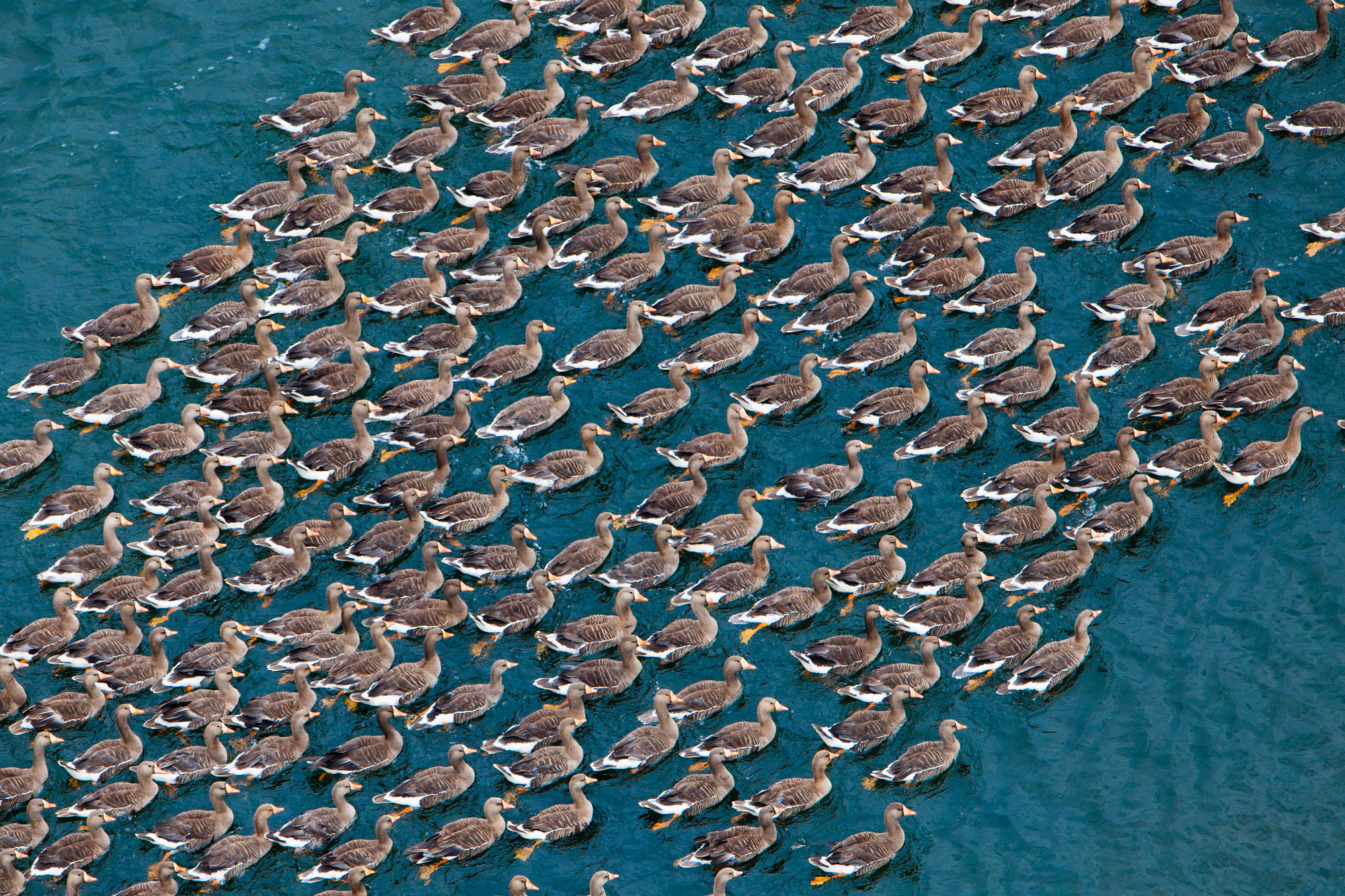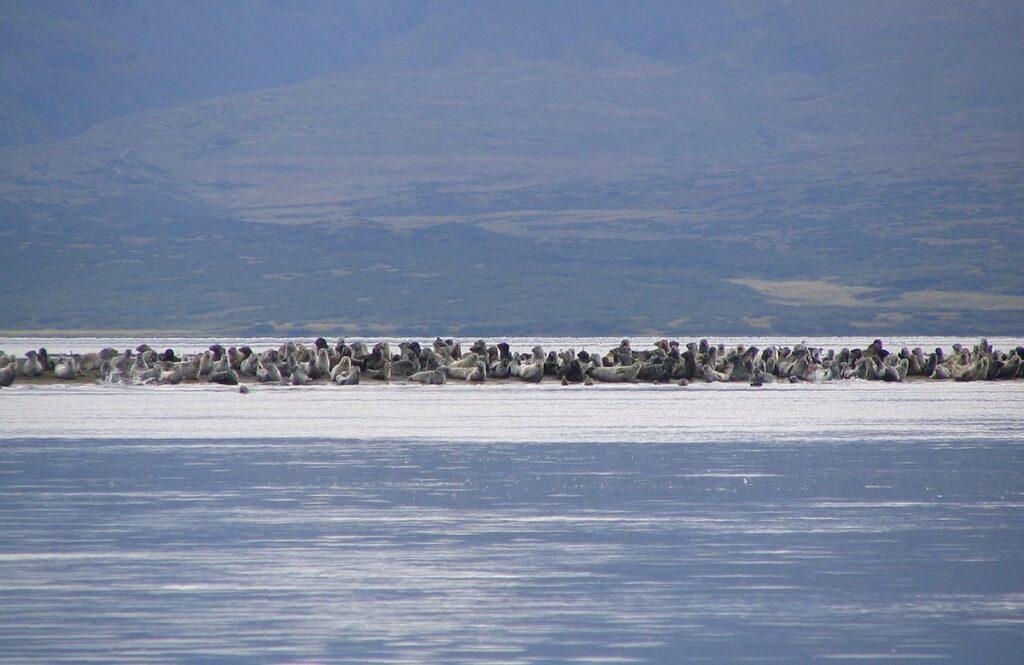What Public Lands will Alaska Have Left Once Trump is Through with Them?

In just nine months, Trump has taken brash and inconceivable moves to open Alaska’s public lands to industrialization. From roads that could rip through Gates of the Arctic National Park, to opening the Arctic Refuge’s coastal plain to drilling, and offering up Special Areas on a buffet table to oil and gas companies, it’s clear that the Trump administration and its allies in Congress have an extraction focused vision for public lands. This vision ignores public interest and puts corporate profit ahead of people, wildlife, and the planet.
Shutting Out the Public, Selling Out the Arctic Refuge

Caribou on the Coastal Plain of the Arctic National Wildlife Refuge in Alaska. (Florian Schulz / protectthearctic.org)
During a government shutdown, Department of the Interior (DOI) Secretary Burgum and the Alaska Delegation met in the Secretary’s office to move forward with plans to open the coastal plain of the Arctic Refuge to oil and gas drilling and re-instate the Trump-era Record of Decision (ROD) with the fewest protections in place. Doing this while Americans are going without paychecks and losing benefits shows loud and clear where their priorities lie—intentionally leaving the public out of a decision that impacts not only those who live in the Arctic, but all Americans.
Time and again, under both Republican and Democratic administrations, oil companies have shown no interest in pursuing these leases. They know the costs are high—financially, politically, and morally—because any profit comes at the expense of Indigenous communities and wildlife.
In addition, the DOI re-instated Alaska Industrial Development and Export Authority (AIDEA) leases, while the legality of the lease sale that sold them is still being challenged in court. At a time when the state of Alaska is having to cut back on social services to balance its budget, AIDEA is continuing to spend money in an attempt to prop up the oil and gas industry, which is already swimming in profits.
You can read more about what happened in our press release.
Concurrently, the Refuge is facing yet another Congressional showdown, as the 2024 Record of Decision (ROD) is being challenged under the Congressional Review Act (CRA). If successful, this would overturn existing protections in favor of a weaker plan. Feeling a bit like Groundhogs Day? Republicans are trying to undo the same protections in multiple arenas using this CRA tool, hoping no one notices.
CRA actions undermine regulatory stability and leave DOI uncertain about how to manage these lands. This use of the Congressional Review Act is unprecedented — CRAs have rarely, if ever, been used to overturn management plans or Records of Decision — and it sets a dangerous precedent for the future of conservation, legislation, and administrative actions.
Putting Profit Over People in the Western Arctic
In the same week the National Petroleum Reserve-Alaska (NPR-A), or Western Arctic, faced similarly devastating threats. The Bureau of Land Management (BLM) issued a call for nominations, the first step in potentially selling off nearly 19 million acres in an oil and gas lease sale. During this process, companies can indicate where they want to buy leases and ultimately drill. The tracts available include parts of previously protected Special Areas like Teshekpuk Lake, Upper Colville River, and Utukok River Uplands — areas that have never faced such imminent threats. While parts of the Western Arctic are under active leases, allowing industrialization to encroach on lands protected for their recreational and biological wonders continues to push the narrative that no place is safe from exploitation when oil billionaires have a say.

A large group of White-fronted Geese on a lake just east of Teshekpuk. © Florian Schulz / visionsofthewild.com
To add more salt to the wound, even the Willow project is expected to yield far less revenue than initially estimated, with lifespan estimates down 50 percent. If the established projects aren’t turning a profit for the state, why pursue more? It’s a clear case of greed and a relentless drive to grab as much public land as possible, while this administration happily hands it over to industry.
Big Oil allies in congress are also attempting to use the CRA process to overturn the Interagency Activity Plan (IAP) for the NPR-A, an action that would reduce or remove protections for millions of acres of Special Areas across the Western Arctic. Overturning it could remove roadblocks to industrial expansion, while also throwing future management direction into a cloud of confusion, as what replaces the repealed plan is not clear, and the CRA disallows plans that are “substantially the same.” While the plan recently passed in the Senate, efforts continue in the House. Once again, this precedent-setting use of the CRA could sow chaos, opening the door for roads, crews, and drilling across the Western Arctic, while leaving future administrations uncertain about how to reinstate protections.
Beyond the Arctic
These threats aren’t limited to the Arctic. In the same “Members Only” meeting, Secretary Burgum announced a land exchange through the Izembek National Wildlife Refuge and bypassed the proper land exchange mechanism, putting protections under Alaska National Interest Land Conservation Act (ANILCA) at risk.

Izembek National Wildlife Refuge Photo by Kristine Sowl, USFWS
Meanwhile, the Administration also reissued two Right of Way permits for the Ambler Road corridor despite President Biden’s former rejection. These permits are the first step in building a 211-mile road across BLM lands and within a national park. You can read more about how they’re fast-tracking Ambler Road here.
Where are We Now?
Whether you’re new to the fight for Alaska’s public lands or have been dedicated for decades, what’s happening under this Administration and in this Congress is difficult to process and can feel overwhelming. The pace and scale of these attacks, and the speed at which we’re forced to respond, can make it seem like we’re caught up in something beyond our control. While the current political agenda is certainly one we’d want to change there are still opportunities to speak up and push back. We’ll continue to lobby, submit comments, build a record of dissent, and raise these issues on a national scale.
Every attempt to cut the public out of the process of managing our public lands will only strengthen our resolve to fight back, demonstrate the widespread support for protecting Alaska’s wildest and most critical landscapes, and make sure these places endure for generations to come. Finally, times won’t be this tough forever, and when the lay of the land improves, what we do today will simply be the foundation we use to rebuild much needed protections for these incredible places. Put simply, we will not allow them to sell off public lands.
Header Photo: Danielle Brigida/ USFWS
